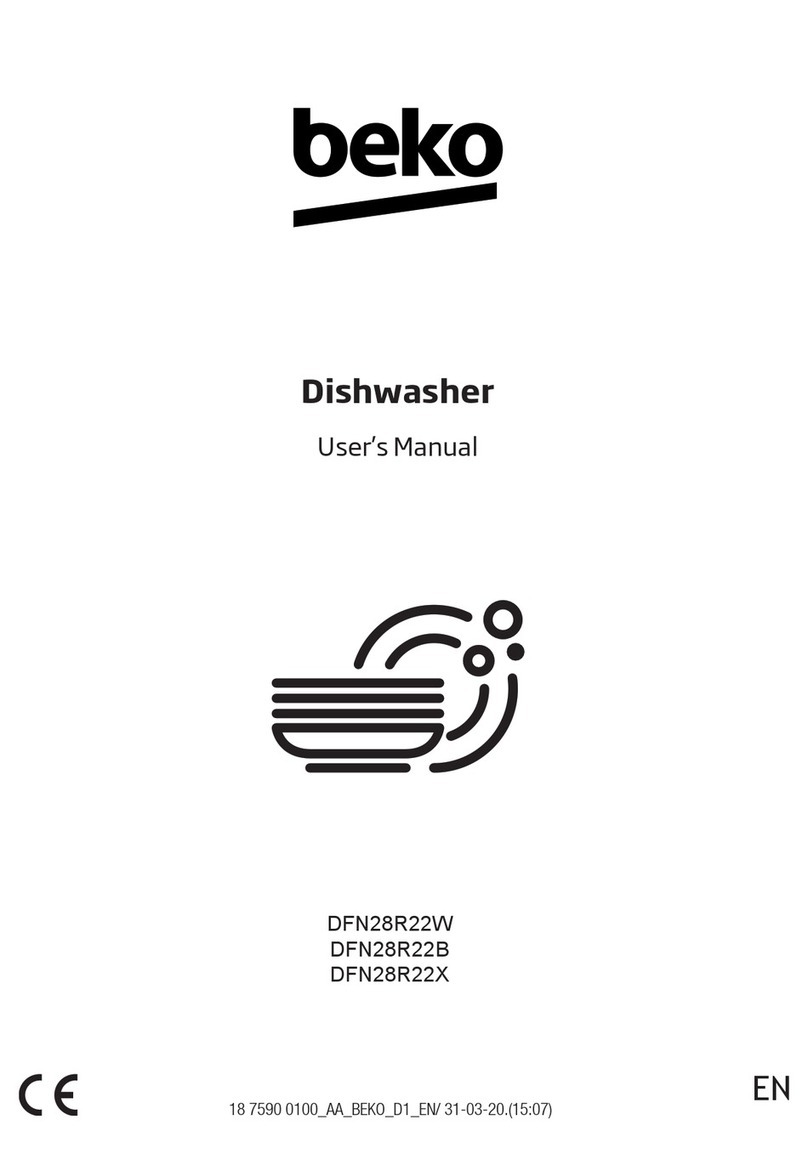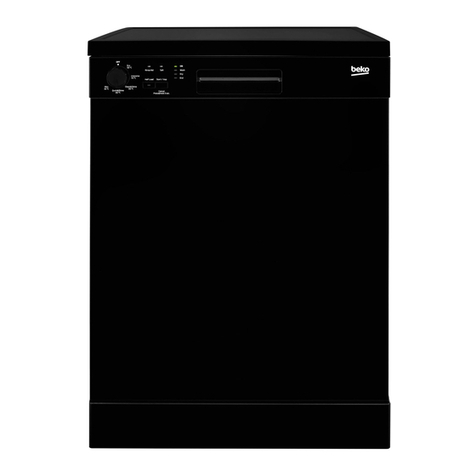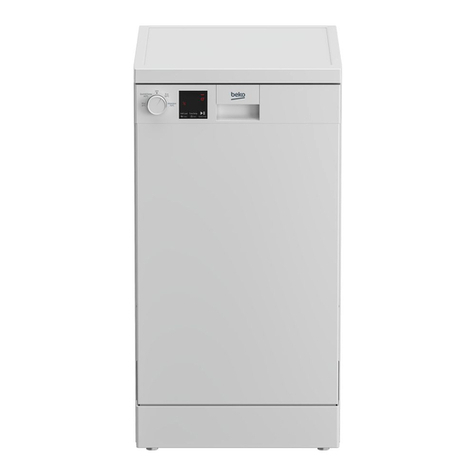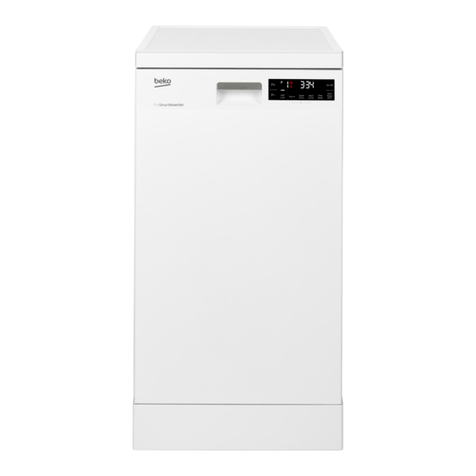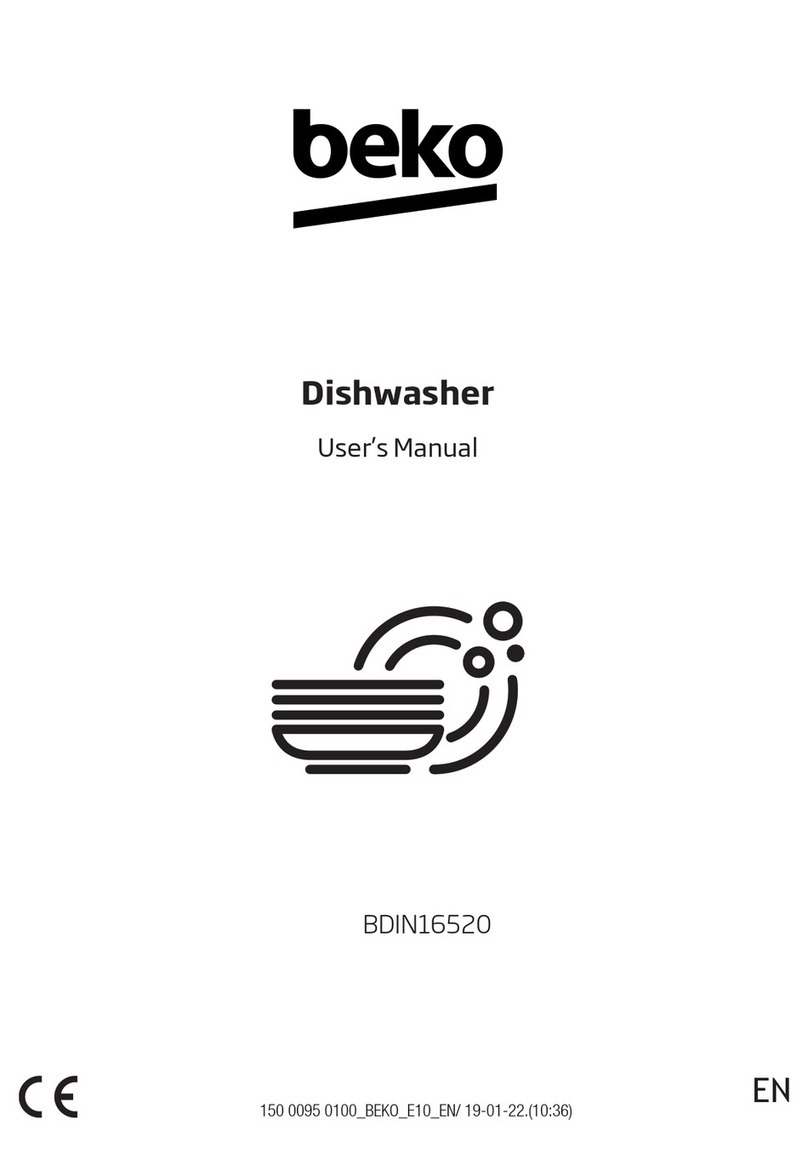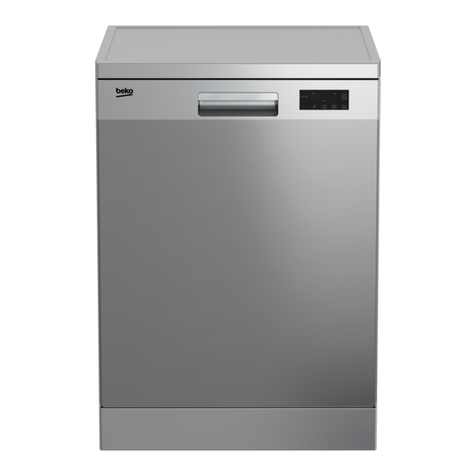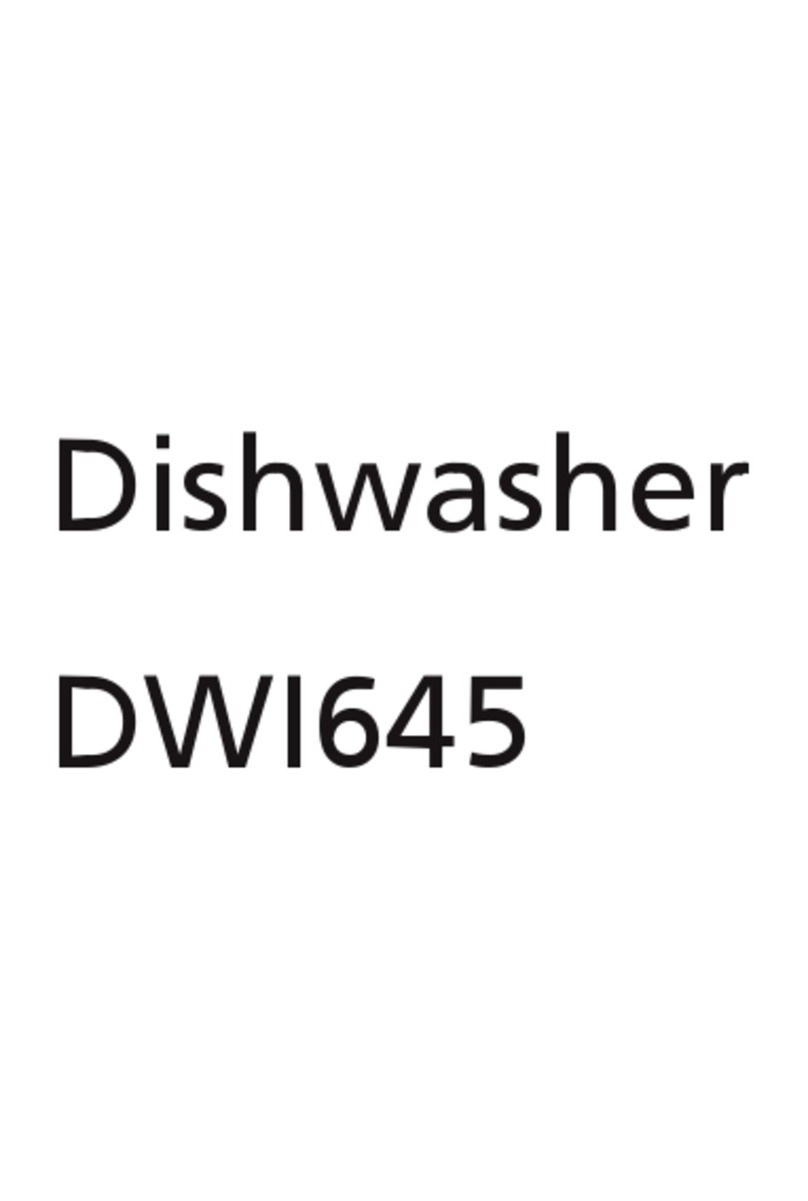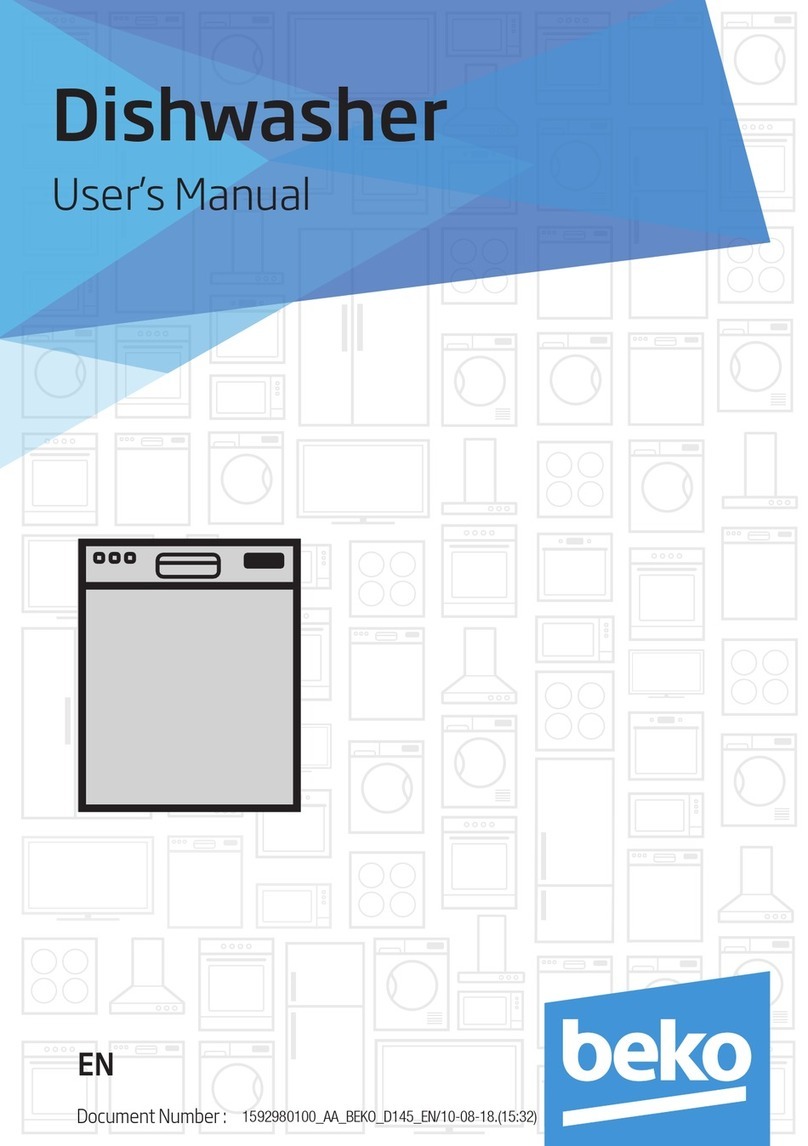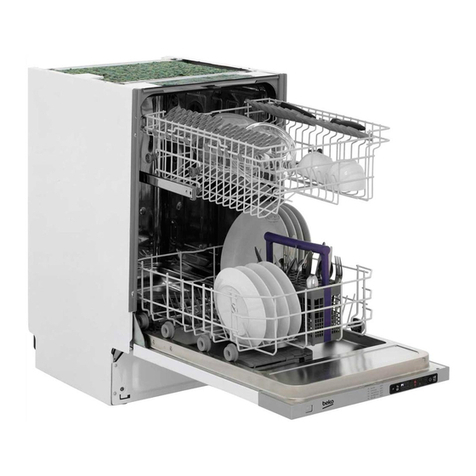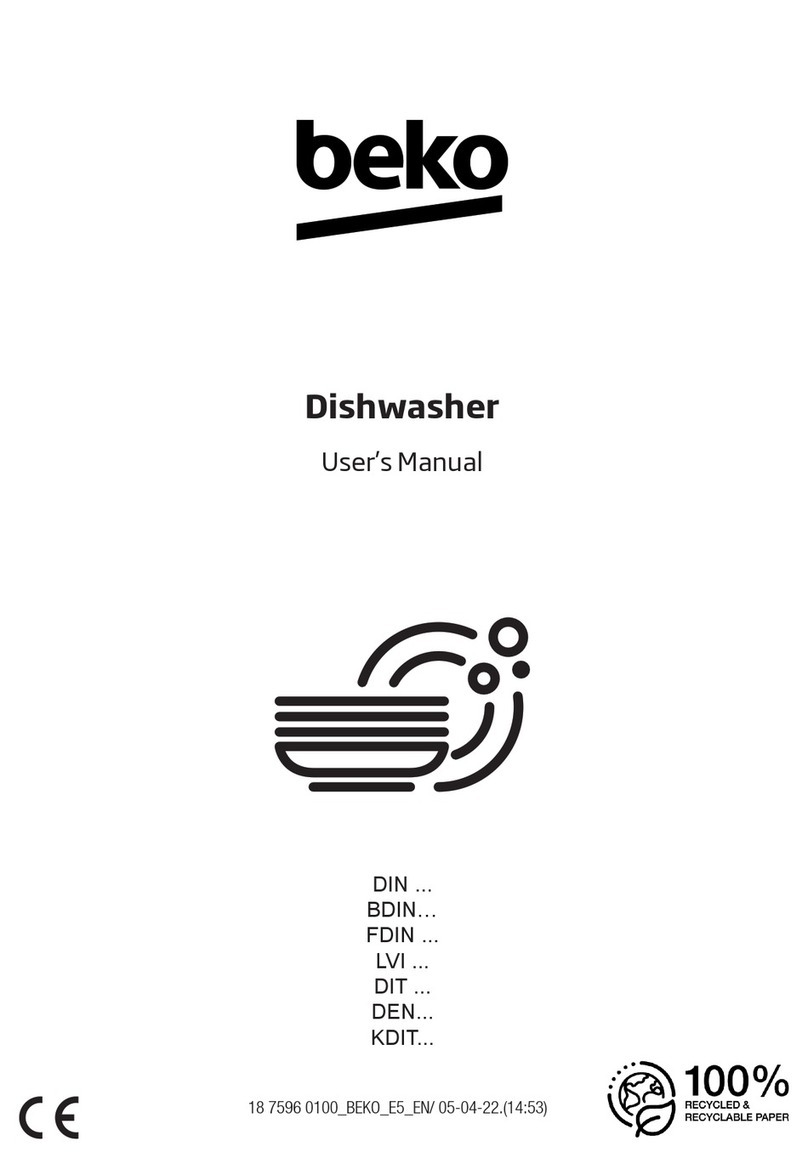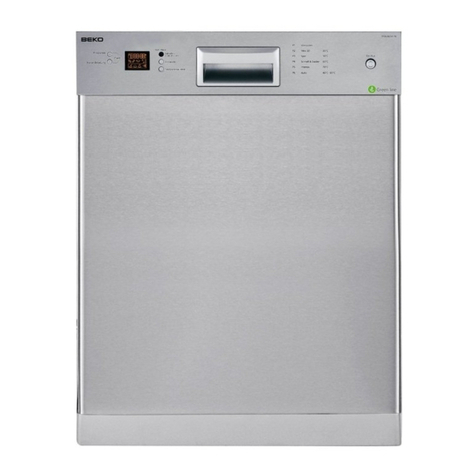
Dishwasher / User’s Manual 9 / 35
EN
3Installaton
To make the product ready for use,
make sure that the electricity, tap water
supply and water drainage systems are
appropriate before calling the Authorised
Service Agent. If they are not, call a
qualified technician and plumber to have
any necessary arrangements carried out.
C
Preparation of the location
and electrical, tap water and
waste water installations at the
place of installation is under
customer's responsibility.
B
Manufacturer shall not be held
responsible for damages arising
from processes carried out by
unauthorised persons.
A
Prior to installation, visually
check if the product has any
defects on it. If so, do not have
it installed. Damaged products
cause risks for your safety.
C
Make sure that the water inlet
and discharge hoses are not
folded, pinched or crushed
while pushing the product into
its place after installation or
cleaning procedures.
When placing the product, pay attention
not to damage the floor, walls, piping, etc.
Do not hold the product from its door or
panel to move it.
Approprate nstallaton
locaton
•Place the product on a solid and flat
floor that has sufficient load carrying
capacity! The product must be
installed on a flat surface in order for
the door to be closed comfortably and
securely.
•Do not install the product at places
where temperature may fall below
0ºC.
•Place the product on a rigid floor. Do
not place it on a long pile rug or similar
surfaces.
B
Ensure the power cable does
not get trapped under the
product.
•Make sure that you select a location
that will allow you to load and unload
the dishes in a fast and comfortable
manner.
•Install the product in a place close
to the tap and the drain. Select the
installation location by considering
that it will not be changed after the
connections are made.
Connectng water supply
•Do not use old or used water inlet
hose on the new product. Use the new
water inlet hose supplied with the
product.
•Connect the water inlet hose directly
to the water tap. Pressure coming
from the tap should be minimum 0.3
and maximum 10 bars. If the water
pressure exceeds 10 bars, a pressure
relief valve should be installed in
between.
•Open the tap completely after making
the connections to check for water
leaks.
A
For your safety, close the water
inlet tap completely after the
washing programme is over.




